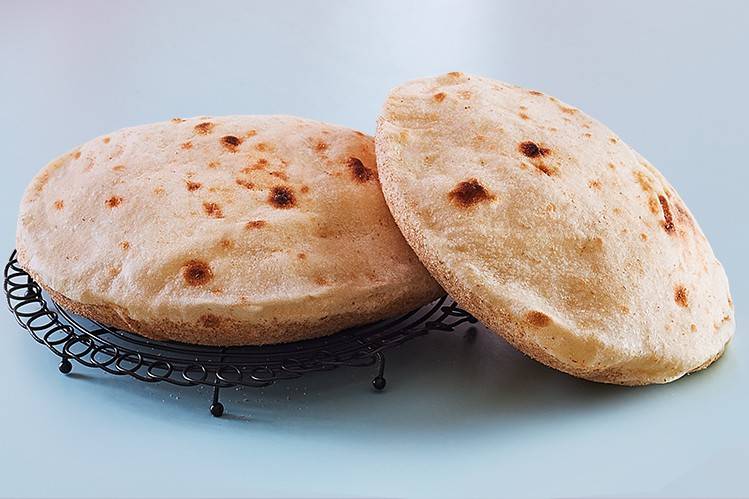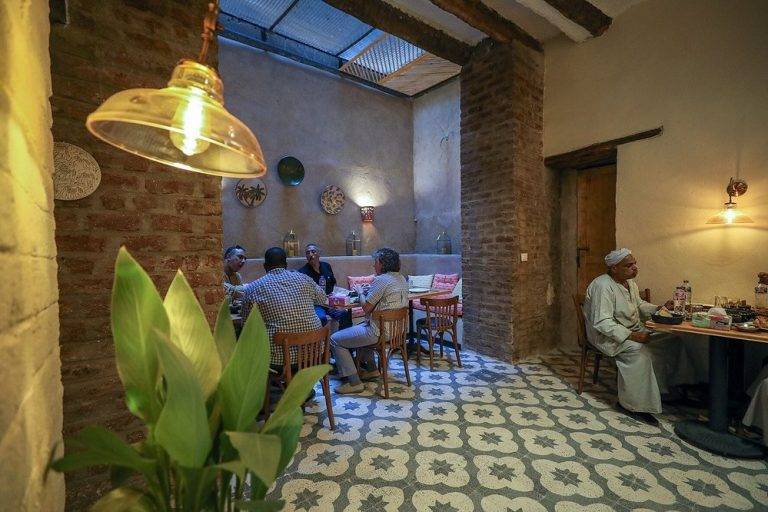Egyptian Mahshi
Egyptian cuisine
Egyptian cuisine has a unique charm, with every dish reflecting heritage and togetherness. Mahshi, a beloved comfort food, features tender grape leaves or hollowed vegetables filled with a flavorful mix of rice, herbs, and spices, simmered in rich tomato sauce. This dish is celebrated across Egypt, with various regional adaptations. Versatile and affordable, Mahshi embodies the warmth of family gatherings, effortlessly bringing people together for both special occasions and everyday meals.

In Luxor, meals are a special experience that combine different flavors and aromas along with warm hospitality. One dish that stands out is Mahshi, made with locally grown vegetables like zucchinis, bell peppers, and eggplants that thrive in the fertile Nile Valley soil. Preparing Mahshi together reflects the city’s focus on family and community, making it a favorite for festivals, family gatherings, and everyday meals. Whether you enjoy it on a rooftop with a view of the Nile or at a lively family event, Mahshi in Luxor captures the heart of Egyptian cooking, linking the past and present with each tasty bite.

Historical Background Of Mahshi
Mahshi is deeply rooted in Egypt’s culinary traditions, evolving from ancient Mediterranean and Middle Eastern practices into a staple in Egyptian households. Its origins reflect a time of resourcefulness, utilizing seasonal vegetables and affordable ingredients like rice. Over time, Mahshi has taken on cultural and emotional significance, with each region and family adding their unique twist, making it a diverse dish that reflects the people who prepare it.
Luxor Tours & Activities
Looking to save some costs on your travel? Why not join a shared group tour to explore Luxor, Egypt? Here are some activities you might be interested in:

Cultural Significance Of Mahshi
Mahshi is a key dish in Egyptian celebrations, from weddings to Ramadan iftar meals. Its preparation often brings families together, allowing them to bond and share culinary traditions. Beyond its delicious taste, Mahshi represents hospitality and generosity, often made in large quantities to share with neighbors and guests. Serving Mahshi fosters connection and joy among loved ones.

Ingredients and Preparation of Mahshi
The beauty of Mahshi lies in its simplicity and the harmony of its ingredients. The filling typically consists of:
- Rice: The base ingredient, providing texture and substance.
- Fresh herbs: Parsley, dill, and coriander add vibrant flavor and aroma.
- Tomato sauce: Both in the filling and as a cooking base, lending a tangy richness.
- Spices: A blend of cinnamon, cumin, black pepper, and sometimes allspice, giving the dish its distinct taste.
- Optional minced meat: For a heartier version, ground beef or lamb can be mixed into the rice filling.

Varieties of Mahshi
Mahshi comes in many forms, depending on the vegetables or leaves used for stuffing. Popular varieties include:
- Vine Leaves: Perhaps the most iconic version, grape leaves are rolled with precision and packed with the aromatic rice mixture.
- Zucchini: Hollowed-out zucchini are tender and perfect for absorbing the rich tomato broth.
- Bell Peppers: Vibrant and slightly sweet, stuffed bell peppers are a colorful addition to any Mahshi spread.
- Eggplants: With their velvety texture, eggplants provide a luxurious base for the filling.
- Tomatoes and Cabbage: These variations bring their unique flavors and are particularly beloved in certain regions of Egypt.
Family and regional preferences often influence the choice of vegetables, with some recipes even incorporating seasonal produce for added variety.

Global Appeal and Modern Trends
Growing Global Popularity
Egyptian food is gaining recognition worldwide, and Mahshi is one of its most loved dishes. Many Egyptian restaurants serve Mahshi, introducing its delicious flavors to new audiences. Food bloggers and chefs showcase how to make it, highlighting its cultural significance.
Adapting to Modern Tastes
Mahshi is also adapting to different diets. There are now vegetarian and vegan options focusing on herb-infused rice. Health-conscious cooks use brown rice or quinoa to give this traditional dish a fresh twist.
Egyptian families living abroad share their Mahshi recipes and stories, helping to connect people everywhere. Mahshi continues to bring people together no matter where they are.

Recipes for Making Mahshiat Home
Ingredients:
- 1 cup of uncooked rice
- 1 bunch of fresh parsley, finely chopped
- 1/2 bunch of dill, finely chopped
- 1/2 bunch of coriander, finely chopped
- 2 medium onions, grated
- 2 cloves of garlic, minced
- 2 medium tomatoes, grated or finely chopped
- 1/2 cup of tomato paste
- 1 teaspoon ground cinnamon
- 1 teaspoon ground cumin
- 1/2 teaspoon black pepper
- 1 teaspoon salt
- 1/4 cup olive oil (plus extra for drizzling)
- 1/2 pound ground beef or lamb (optional)
- Vegetables for stuffing (e.g., grape leaves, zucchinis, bell peppers, eggplants, cabbage leaves)
- 2 cups of tomato-based cooking broth (prepared with tomato paste, water, salt, and a splash of lemon juice)

Instructions:
- Prepare the Filling: In a large mixing bowl, combine the rice, herbs, grated onions, minced garlic, grated tomatoes, tomato paste, cinnamon, cumin, black pepper, salt, olive oil, and ground meat (if using). Mix thoroughly until well combined.
- Prepare the Vegetables:
- For grape leaves: Rinse and blanch them in hot water to soften.
- For zucchinis, eggplants, or bell peppers: Hollow out the center carefully using a corer or small knife.
- For cabbage: Blanch the leaves in boiling water until pliable, then trim the thick stems.
- Stuff the Vegetables:
- Place a small amount of the filling inside each vegetable or leaf, leaving a little space for the rice to expand during cooking.
- For grape or cabbage leaves: Roll them tightly, tucking in the sides as you go.
- Layer the Pot:
- Arrange slices of tomatoes or onions at the bottom of a large pot to prevent sticking.
- Neatly layer the stuffed vegetables and rolls in the pot, keeping them snug to prevent them from unraveling.
- Add the Broth:
- Mix the cooking broth ingredients and pour over the stuffed vegetables until just covered.
- Cook the Mahshi:
- Place a heatproof plate on top of the vegetables to keep them pressed down during cooking.
- Cover the pot with a lid and bring to a gentle simmer over medium heat.
- Reduce the heat to low and cook for 40-60 minutes, until the vegetables are tender and the rice is fully cooked.
- Serve:
- Remove the Mahshi carefully from the pot and arrange on a serving platter.
- Drizzle with a little olive oil or lemon juice before serving.
Enjoy the comforting flavors of traditional Egyptian Mahsh






